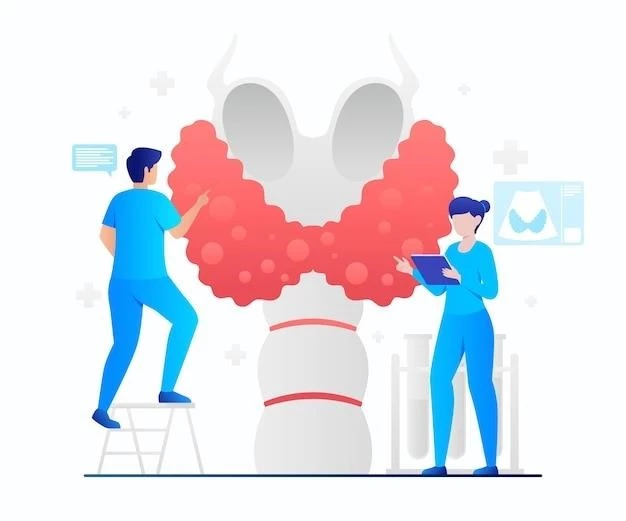Get an in-depth understanding of CCAM‚ including causes‚ symptoms‚ treatment options‚ prognosis‚ research advances‚ and support resources.
Definition and Background
Understanding the Basics⁚
Congenital Cystic Adenomatoid Malformation (CCAM) is a rare lung condition present at birth‚ where cysts form in lung tissue. These cysts can affect breathing and lung development in infants. Seeking early diagnosis and treatment is crucial for managing CCAM effectively. It’s essential to work closely with healthcare providers to create a comprehensive care plan tailored to your child’s needs.

Causes of Congenital Cystic Adenomatoid Malformation
Learn about the possible causes of CCAM to better understand this condition and its implications on lung health.
Possible Causes
Exploring Potential Triggers⁚
The exact causes of Congenital Cystic Adenomatoid Malformation (CCAM) are still under investigation. While the condition is believed to originate during fetal development‚ factors like genetic mutations or abnormal lung growth may contribute to its occurrence. Research continues to uncover insights into the complex underlying mechanisms of CCAM.
Symptoms and Diagnosis of Congenital Cystic Adenomatoid Malformation
Recognize the common symptoms and understand the diagnostic procedures for timely intervention and management of CCAM.
Common Symptoms
Recognizing Telltale Signs⁚
Common symptoms of Congenital Cystic Adenomatoid Malformation (CCAM) may include respiratory distress‚ persistent cough‚ and recurrent respiratory infections. Other signs to watch for are an enlarged chest‚ fast breathing‚ and cyanosis. It’s crucial to seek medical attention if you notice any of these symptoms in your child. Early diagnosis and proper management can improve outcomes.
Diagnosis
Evaluating and Confirming CCAM⁚
Diagnosing Congenital Cystic Adenomatoid Malformation (CCAM) often involves imaging tests like ultrasound‚ fetal MRI‚ or CT scans. In some cases‚ it may be identified before birth during routine prenatal screenings. Once detected‚ further evaluations and consultations with pediatric specialists are essential to determine the best course of action for your child’s care.
Treatment Options for Congenital Cystic Adenomatoid Malformation
Explore the different treatment approaches available to manage Congenital Cystic Adenomatoid Malformation (CCAM) effectively.
Treatment Approaches
Customized Care Strategies⁚
Treatment for Congenital Cystic Adenomatoid Malformation (CCAM) varies depending on the severity of the condition. Approaches may include monitoring for asymptomatic cases‚ surgical removal of affected lung areas‚ or supportive therapies to address respiratory issues. Consulting with a multidisciplinary team of healthcare professionals will help tailor a treatment plan to your child’s specific needs and overall well-being.
Prognosis and Complications of Congenital Cystic Adenomatoid Malformation
Understand the prognosis and potential complications associated with Congenital Cystic Adenomatoid Malformation (CCAM) for informed decision-making.
Prognosis
Evaluating Future Outlook⁚
The prognosis for Congenital Cystic Adenomatoid Malformation (CCAM) varies depending on factors such as the size and location of the cysts‚ the presence of other anomalies‚ and the response to treatment. While many infants with CCAM respond well to interventions and have a positive outlook‚ close monitoring and ongoing medical care are crucial to manage potential long-term implications and ensure the best possible outcome for your child.
Complications
Understanding Potential Risks⁚
Complications of Congenital Cystic Adenomatoid Malformation (CCAM) can include respiratory issues‚ infections‚ or breathing difficulties in severe cases. It’s essential to be aware of these potential complications and work closely with healthcare providers to address them promptly. Early detection and appropriate management can help reduce the impact of complications and improve overall outcomes for individuals with CCAM.
Research Advances in Congenital Cystic Adenomatoid Malformation
Stay informed about the latest research developments in Congenital Cystic Adenomatoid Malformation (CCAM) to better understand potential breakthroughs in treatment and care.
Current Research
Exploring Innovations⁚
Ongoing research on Congenital Cystic Adenomatoid Malformation (CCAM) focuses on understanding the genetic and molecular pathways involved‚ improving diagnostic techniques‚ exploring non-invasive treatment options‚ and enhancing long-term outcomes for individuals with CCAM. Staying updated on current research findings can guide treatment decisions and offer hope for better management strategies in the future.
Support and Resources for Congenital Cystic Adenomatoid Malformation
Access valuable support networks and resources to navigate the challenges of Congenital Cystic Adenomatoid Malformation (CCAM) effectively.
Support Networks
Building a Community⁚
Connecting with support networks can provide invaluable emotional support and practical advice for families affected by Congenital Cystic Adenomatoid Malformation (CCAM). These networks offer a platform to share experiences‚ find guidance‚ and access resources that can help navigate the challenges of managing CCAM effectively. Joining a support network can help you feel less isolated and more empowered in your journey.
Resources
Accessing Valuable Information⁚
Exploring resources dedicated to Congenital Cystic Adenomatoid Malformation (CCAM) can provide comprehensive information on treatments‚ specialists‚ research updates‚ and support services. Websites‚ medical centers‚ and patient advocacy organizations offer educational materials‚ financial assistance options‚ and community initiatives to help individuals and families affected by CCAM make informed decisions and access the support they need.
Living with Congenital Cystic Adenomatoid Malformation
Discover tips and strategies to enhance the quality of life while managing Congenital Cystic Adenomatoid Malformation (CCAM) effectively.
Quality of Life
Enhancing Well-Being⁚
Improving the quality of life for individuals living with Congenital Cystic Adenomatoid Malformation (CCAM) involves prioritizing holistic care‚ maintaining regular follow-ups‚ engaging in supportive therapies‚ and staying informed about the latest advancements in CCAM management. By fostering a positive mindset‚ seeking community support‚ and staying proactive in health management‚ individuals with CCAM can lead fulfilling lives while addressing the challenges of the condition.
